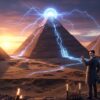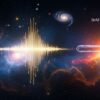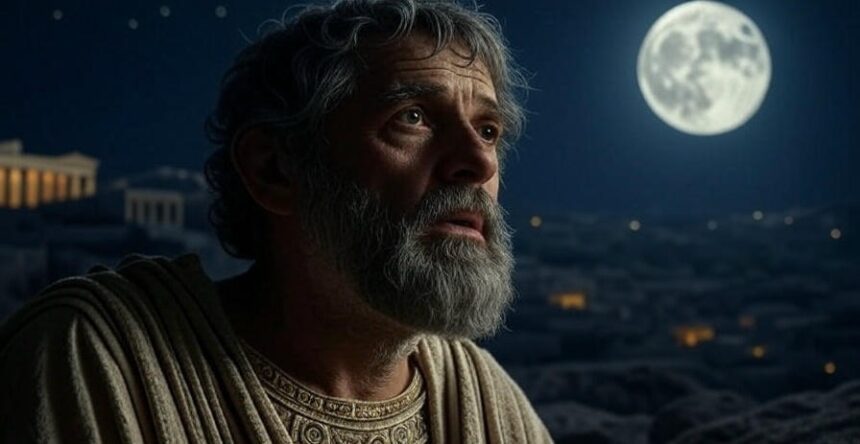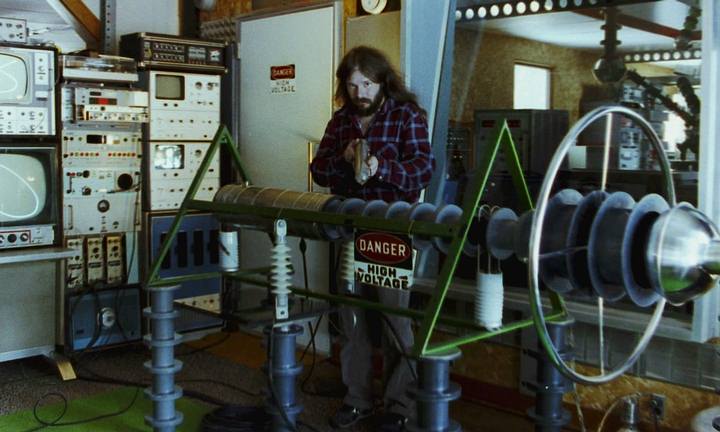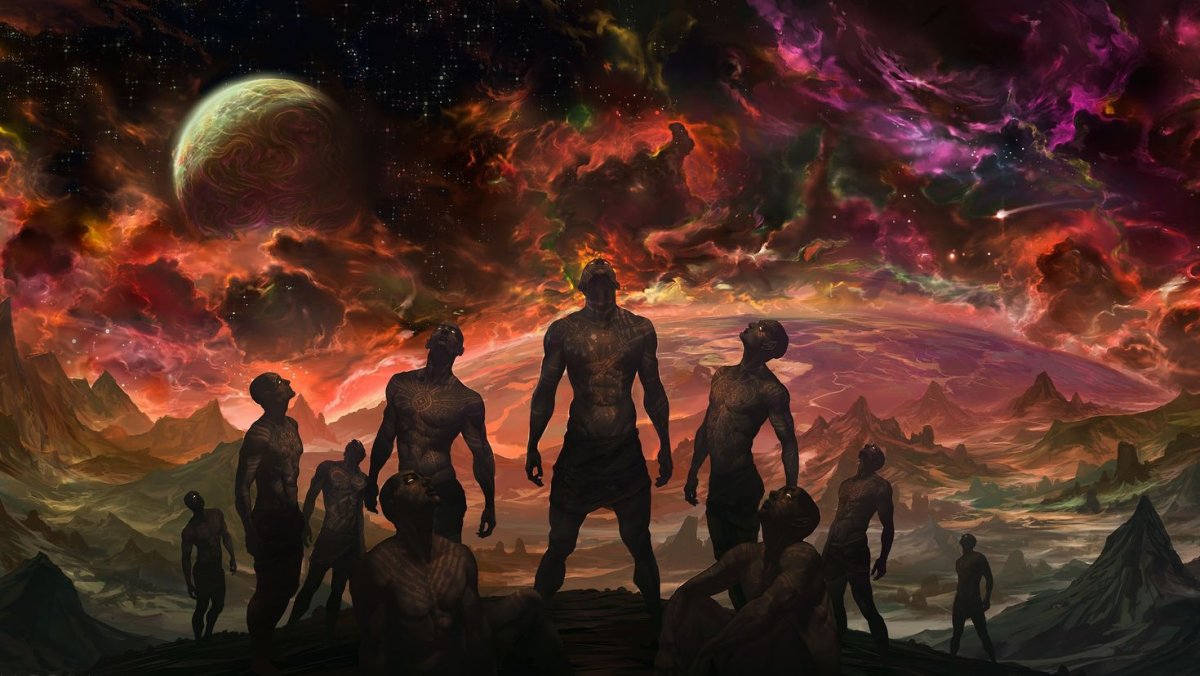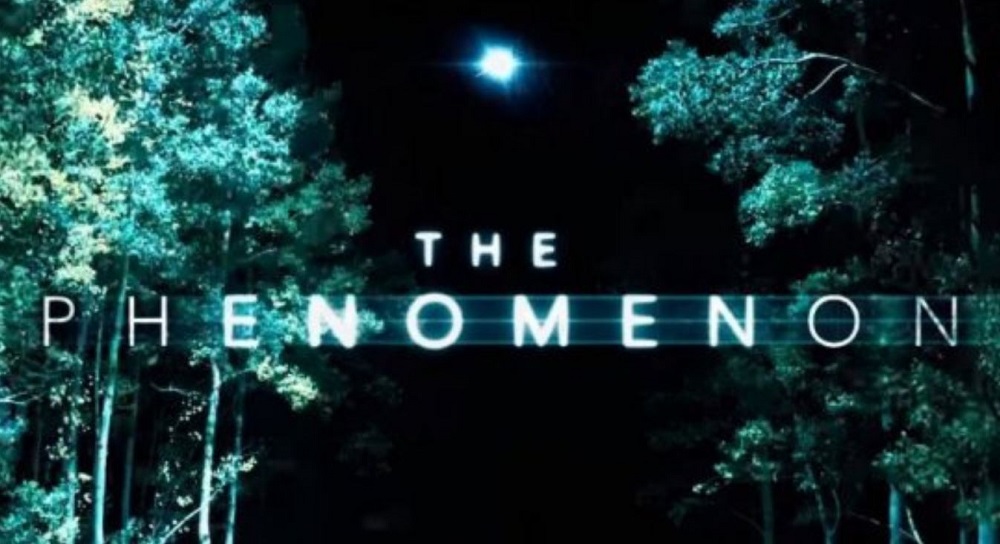For millennia, the Moon has captivated humanity’s imagination — a glowing beacon in the night sky, inspiring myths, philosophies, and even modern scientific intrigue. But what if the Moon is more than just a natural satellite?
What if, as ancient philosophers hinted, the Moon is an artificial creation — one that could “open”? What secrets might it be hiding? And how would Earth be affected?
The Moon: A Celestial Enigma Since Antiquity
The Curious Case of the Missing Moon in Ancient History
It may sound bizarre, but some of the most respected ancient Greek philosophers — including Democritus and Anaxagoras — taught that there was a time when Earth had no Moon.
This startling idea isn’t isolated. Aristotle noted that the Pelasgian people of Arcadia predated the Moon’s appearance in the sky, even calling them “Proselenes”, meaning “those who existed before the Moon.” Similarly, Apollonius of Rhodes, Plutarch, Lucian, and Ovid referred to a prehistoric time when the Moon had not yet risen above Earth’s horizon.
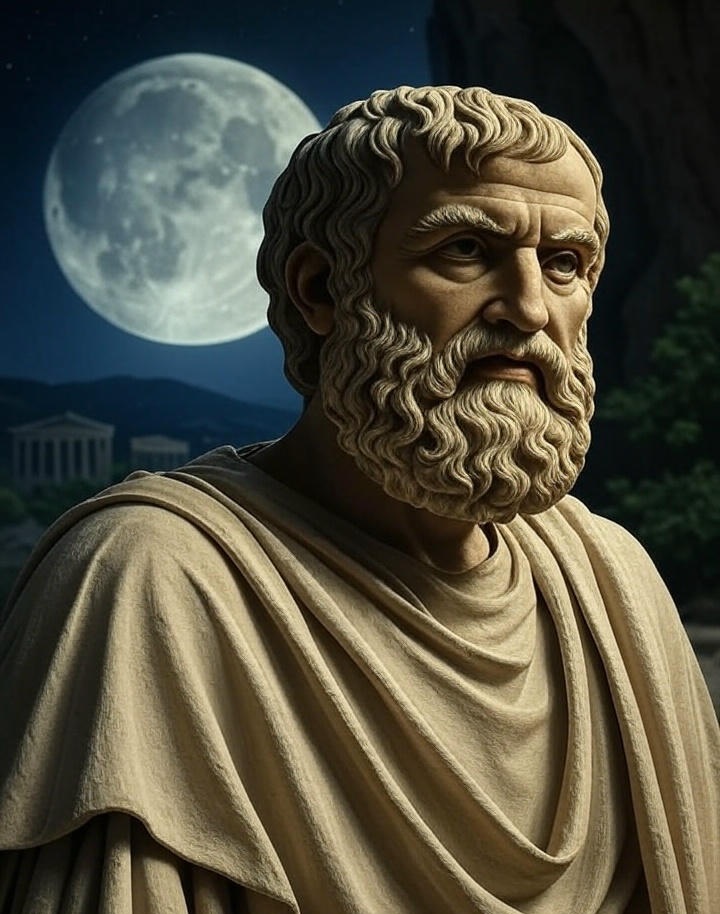
Could it be that the Moon arrived in Earth’s orbit suddenly — not formed alongside Earth, as most astronomers believe?
Modern Clues: A Vacuum Beneath the Moon?
Recent scientific findings seem to support the idea that the Moon may not be entirely what it seems.
Subsurface Anomalies and Strange Hollow Zones
NASA seismic data has shown that the Moon rings like a bell when struck — indicating a potentially hollow interior. Even more intriguing, modern researchers have discovered vacuum-like cavities under the lunar crust, suggesting the possibility of vast internal chambers.
Could these be natural formations — or the remnants of something engineered?
Is the Moon Artificial? A Structure Out of Place
Disproportionate Size and Mysterious Motion
Among all the celestial bodies in our solar system, the Moon is the only satellite that is disproportionately large compared to its planet. Its perfect eclipse-causing dimensions, unusual orbital mechanics, and locked rotation (we only see one side!) have led some researchers to suspect that the Moon might not be a typical satellite at all.
Unlike other moons, it doesn’t follow the standard behaviors of planetary satellites — and that’s just the beginning.
Russian Scientists and Moon Colonization Concepts
Modern space agencies, including those in Russia, are developing bold plans to colonize the Moon — not just on its surface, but beneath it. Recent proposals involve creating habitats in vacuum-sealed cavities under the Moon’s crust, where humans could live safely, protected from space radiation and extreme temperature swings.
Still, gravity would remain an issue, and any excursions onto the surface would require pressurized spacecraft, not spacesuits alone.
But why build below the surface? Could these scientists be tapping into knowledge the ancients once possessed?
Ancient Cataclysms: Did the Moon Arrive in a Deluge?
South American Evidence: The Moon’s Arrival Sparked Global Chaos
In the Bolivian ruins of Kalasasaya near Tiahuanaco, symbols etched into stone suggest that the Moon first appeared in Earth’s sky about 12,000 years ago. According to these accounts, its arrival triggered catastrophic earthquakes, floods, and climate shifts.
Some researchers link this event to the destruction of Atlantis, describing the Moon’s sudden appearance as a planetary upheaval of cosmic proportions.
Could such an event happen again — especially if the Moon were to “open”?
Mythical Spacecrafts and Lunar Civilizations
Lucian’s “True History”: Science Fiction… or Ancient Knowledge?
In 120 A.D., the Greek writer Lucian of Samosata penned True History, a tale that eerily mirrors modern space travel:
- A ship blown into the sky reaches the Moon in eight days — the same time modern spacecraft need.
- The protagonist explores a city on the Moon, uses telescopic lenses, and even witnesses battles between lunar beings and visitors from Sirius using advanced aerial technology.
- Lucian describes three-headed flying creatures, warriors with horned helmets (antennae?), and journeys through the Zodiac constellation belt — even referencing a splashdown near Bermuda, centuries before space capsules landed there.
Is this ancient science fiction — or long-lost cosmic knowledge?
Greek Philosophers and the Cosmic Secrets of the Moon
Pythagoras and the Moon’s Divine Inhabitants
Pythagoras taught that the Moon is home to beings resembling humans — taller, fairer, and more beautiful, who live in structured societies. He said the lunar day lasts 15 Earth days (scientifically accurate today) and that he journeyed around the Moon in vehicles of the gods.
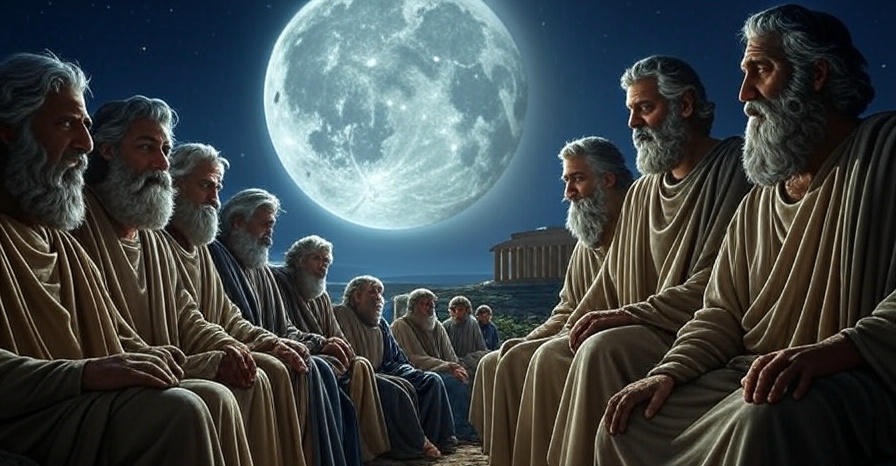
His detailed knowledge of mathematics, geometry, astronomy, and music was attributed to celestial contact.
Socrates and the Hollow Sphere
According to Xenophanes, Socrates described the Moon as a hollow sphere, containing lands and seas with inhabitants much like us. Modern astronomers now theorize that subsurface oceans or voids may indeed exist inside celestial bodies — including the Moon.
Orpheus and the Lunar Calendar
Orpheus, son of Apollo, is one of mythology’s most mystical figures. He taught:
- The Moon has mountains, cities, and houses.
- It’s made of earth-like soil and populated by divine societies.
- The lunar phases, solstices, equinoxes, global magnetism, and planetary motion were part of his teachings.
He even spoke of beings that migrated from planet to planet, suggesting a form of cosmic diaspora.
The Lost Civilizations: Telchines, Samothrace & Celestial Arks
Myths of the Telchines of Rhodes and the Caves of Samothrace tell of advanced civilizations that vanished after a cataclysm. Legends say they escaped to the Moon or Mars, using bases built by the gods during their colonization of Earth.
Even the myth of Phaethon — the celestial charioteer — speaks of orbiting the Moon 30 times, visiting Venus, and describing the Moon’s dark side in astonishing detail, long before humans ever saw it.
If the Moon “Opens” – What Could Happen to Earth?
What if ancient legends, modern science, and bizarre anomalies are all pointing to one truth?
Could the Moon be:
- A technological construct?
- A hollow vessel housing extraterrestrial artifacts or entities?
- A cosmic gateway to other dimensions or planets?
And if it were to “open” — as some ancient myths imply — could that trigger:
- Shifts in Earth’s magnetic poles?
- Cataclysmic weather changes?
- Gravitational disruptions?
- A revelation about humanity’s true origins?
The Moon May Be Watching
Whether the Moon is a natural satellite, an ancient ark, or something even stranger, one thing is clear — our ancestors knew more than we give them credit for. Their myths, philosophies, and astronomical observations hold keys to cosmic truths we’ve only just begun to understand.
As science peels back the veil of space, we may soon discover that the Moon is not just a rock in the sky — but a cosmic sentinel, one that may one day… open.


